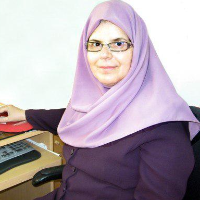Designing COROOR Computer-Based Cognitive Rehabilitation Program and Investigating its Effect on Spelling Efficacy and Visual-Phonological Processing in Students with Dyslexia – Dysorthographia
Weakness of students with dyslexia–dysorthographia in encoding, storage, and retrieval of phonetic writing system leads to the high importance of creating and implementing effective interventional programs in the field of specific learning disabilities. So, the aim of the present study was designing COROOR (Cognitive Rehabilitation of Orthography & Reading) computer-based cognitive rehabilitation program and investigating its effect on spelling efficacy and visual-phonological processing in the students with dyslexia – dysorthographia.
This research was a quasi-experimental study with pretest-posttest control group design and a three-month follow-up period. The population consisted of all third grade primary school boy students with dyslexia-dysorthographia who had referred to learning disabilities centers in Kashan city in the academic year 2018-2019. Among them, 20 students with dyslexia-dysorthographia based on diagnostic tests (Dyslexia syndromes checklist based on DSM-5 criteria, Wechsler Intelligence Scale for Children (WISC), and Conners Rating Scale) were selected by purposive sampling and then, randomly assigned to either the experimental or the control group (10 per group). After implementing the pretests of writing expression disorder (spelling component) (Baezzat, 2010) and visual-phonological processing (Hosaini, Moradi, Kormi Nouri, Hassani, & Parhoon, 2016), the experimental group received the COROOR computer-based cognitive rehabilitation program, while the control group underwent no intervention. Immediately after the intervention, post-tests were performed on both groups. After three months, follow-up tests were performed on the groups. The data were analyzed using repeated measures multiple-analysis of variance.
Findings showed that 20 sessions of cognitive rehabilitation for orthographic and color detection tasks by COROOR software reduced spelling errors and improved visual-phonological processing in the experimental group at post-test and follow-up stages (p< 0.01)
According to the results, it can be said that the use of orthographic and color detection tasks by COROOR computer-based cognitive rehabilitation is effective for the spelling and visual-phonological processing of students with dyslexia and dysorthographia. As a result, it can be recommended as a useful rehabilitation method to specialists and therapists in the field of specific learning disabilities.
- حق عضویت دریافتی صرف حمایت از نشریات عضو و نگهداری، تکمیل و توسعه مگیران میشود.
- پرداخت حق اشتراک و دانلود مقالات اجازه بازنشر آن در سایر رسانههای چاپی و دیجیتال را به کاربر نمیدهد.


